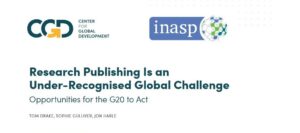Nepalese urban population at high risk of cardiovascular diseases
Changing life-style in urban areas is increasing the risk of heart diseases. Recent research done in an urban population of Nepal’s capital Kathmandu to assess their risk factors to cardio vascular diseases has found that the risk factors are high.
The research studied the prevalence of cardiovascular risk factors – insufficient physical exercise, high waist circumference, obesity, hypertension, tobacco consumption, dyslipidaemia such as abnormal amounts of lipids (e.g. cholesterol) in the blood and diabetes – in a randomly selected sample size of 130 in densely populated urban Kathmandu.
“The prevalence rate of some risk factors related to sedentary life style was alarmingly high in the study area,” says Dr Amrit Bogati the lead author of the article published in the Nepal Heart Journal. “Insufficient physical activity prevailed in 69% of the population, while high waist circumference prevailed in 68% of the population and obesity prevailed in 59% of the population.”
“The research was carried out by a group of doctors at the Shahid Gangalal National Heart Centre as an effort to contribute research based knowledge in the area as very little research was done on this subject,” he adds.
The prevalence of other cardiovascular risk factors hypertension (38%), tobacco consumption (38%), dyslipidaemia (22%) and diabetes (17%) were also significantly high in the study area.
Dr Bogati notes that this research has been done with a small population in one part of Kathmandu so the findings may not be quite representative of the overall situation in Nepal. He now plans to continue the study in other areas of Kathmandu.
He adds: “Our observation is that at Shaheed Gangalal National Hearth Centre also receives a lot of cases from the villages and Terai where sedentary lifestyle should not have been a problem. We should do more research in different areas so that we can have a better idea of the situation.”
Dr Bogati’s research highlights the need for an aggressive preventive strategy to prevent epidemic of cardiovascular disease in Nepal. He suggests routine health check-up and sensitization to better health practices from the central level to reduce the risk factors and be protected from cardiovascular diseases.
The full text of the research, made available online by INASP for free at NepJOL platform, was published in Nepalese Heart Journal 2017; 14(1): 3-7.
About the journal
The Nepalese Heart Journal is the official journal of Cardiac Society of Nepal aimed at providing a portal for publication of wide ranging topics in cardiovascular research and clinical works to disseminate research works to a variety of health workers and researchers.
About NepJOL
NepJOL hosts over 122 journals published from Nepal, covering the full range of academic disciplines. The objective of NepJOL is to give greater visibility to participating journals and to the research they convey. NepJOL was initiated in June 2006 and officially launched in September 2007. It is a project supported by INASP and locally managed by Tribhuvan University Central Library. It aims to promote the awareness and use of Nepal-published journals in all disciplines by providing access to tables of contents (TOCs), abstracts and full text on the Internet.
About INASP
Founded in 1992, INASP is an international development organization working with a global network of partners in Africa, Latin America and Asia. In line with the vision of research and knowledge at the heart of development, INASP works to support individuals and institutions to produce, share and use research and knowledge, which can transform lives.
INASP’s approaches are based on the core pillars of capacity development, convening, influencing and working in partnership. INASP promotes equity by actively addressing the needs of both men and women across all our work and addressing issues of power within the research and knowledge system. INASP has projects in 28 countries, supporting all aspects of research and knowledge systems, from facilitating the provision of information to researchers to helping parliamentarians and civil servants to use research and evidence in policy making.
Disclaimer: Research published in journals hosted on the NepJOL platform is selected by the journals in accordance with their own editorial processes and criteria. INASP and Tribhuvan University Central Library provide hosting and guidance on good practices but are not involved in selection of research.
For further information
Thakur Amgai, Communications Consultant, INASP
Email: tamgai@inasp.info
Dr Sangita Shrestha, Communications Officer, INASP
Email: sshrestha@inasp.info




